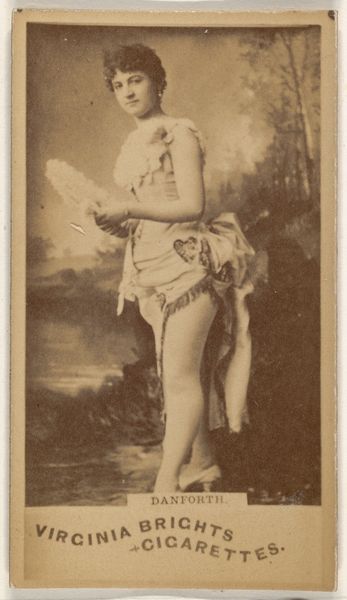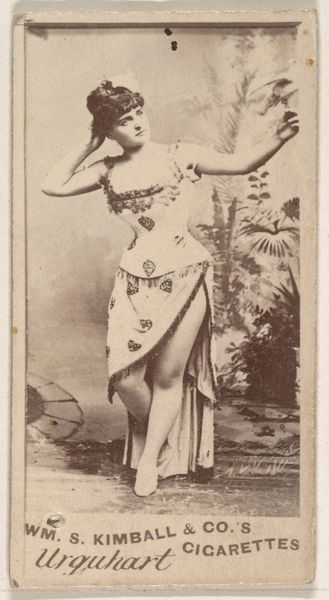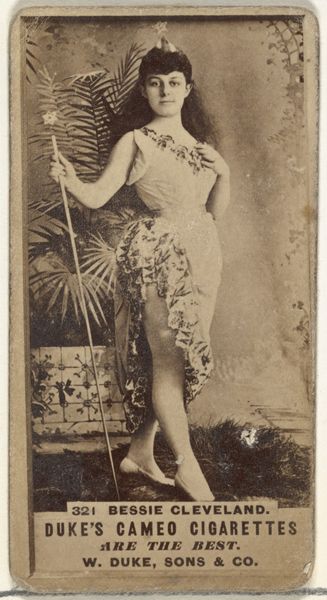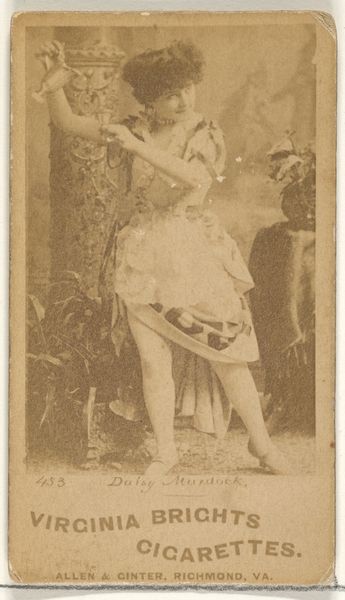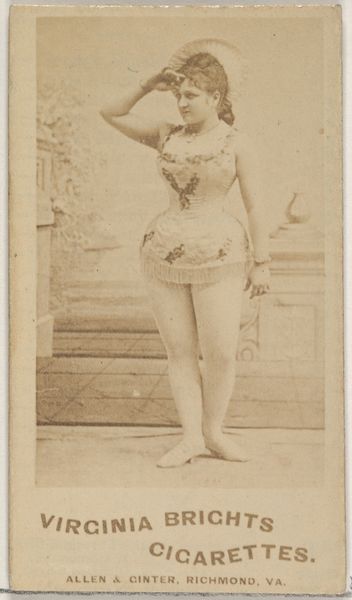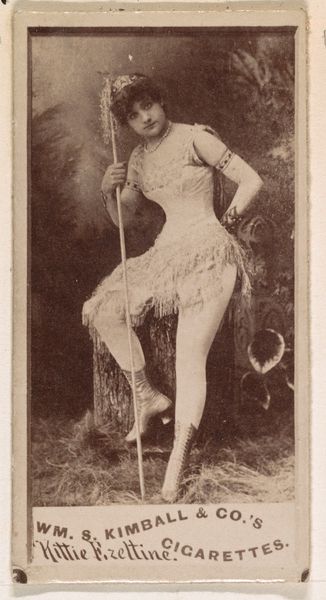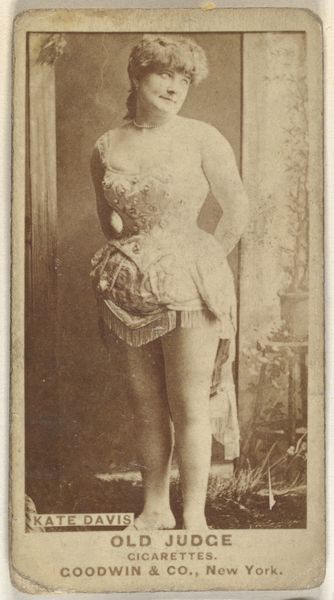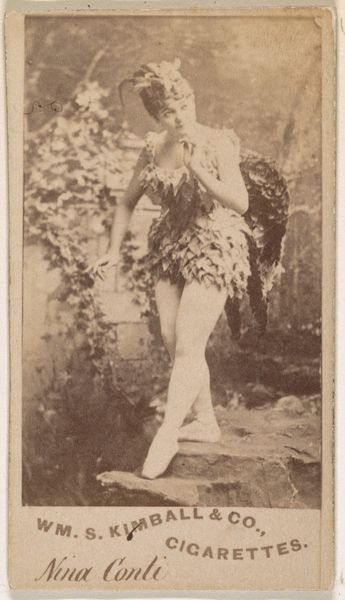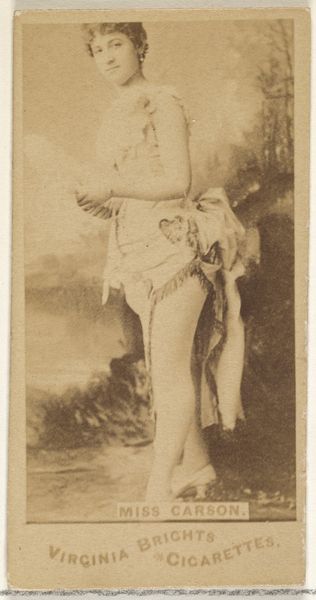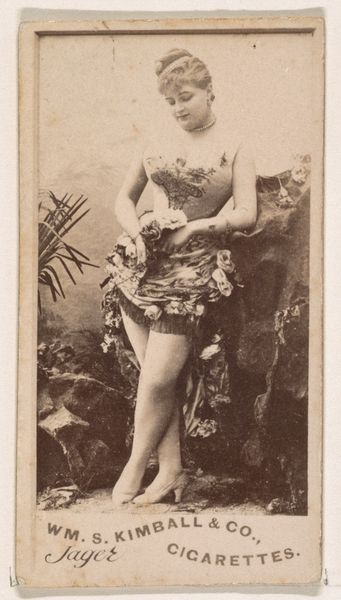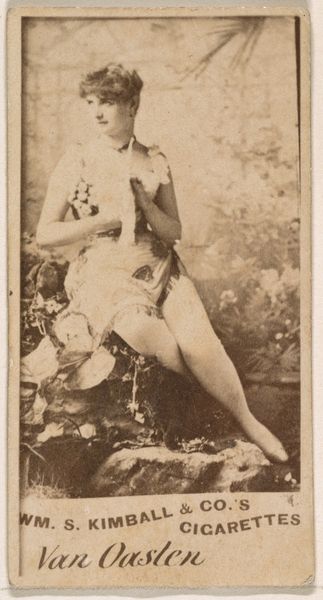
Mollie Fuller, from the Actresses series (N203) issued by Wm. S. Kimball & Co. 1889
0:00
0:00
print, photography
#
portrait
# print
#
figuration
#
photography
#
19th century
#
erotic-art
Dimensions: Sheet: 2 5/8 × 1 3/8 in. (6.6 × 3.5 cm)
Copyright: Public Domain
Editor: This is a portrait of Mollie Fuller from the Actresses series by William S. Kimball & Co, printed in 1889. I notice the photograph itself is sepia-toned and quite small. The figure’s garment appears almost heart-shaped. What elements of its composition strike you? Curator: The sepia tone contributes significantly to its aesthetic. Notice the gradation of tones across the print—the subtle shifts from light to dark, particularly in the backdrop. These tonal modulations create depth, a spatial recession that is immediately flattened by the abrupt crop of the photograph, causing compositional tension. Editor: Tension, yes. Can you expand on that? The composition is simple. How does it contribute meaning? Curator: The framing around Fuller, her ambiguous smile, and direct eye contact all flatten any sense of her actual space. The eye bounces between the dress embellishment and the artist information at the bottom of the shot—in turn drawing us closer to and then abruptly pulling us back from, any easy entry point or gaze. Editor: I see. The lines of the text are almost parallel to the ground on which Mollie Fuller stands, or perhaps *doesn't* stand! Thank you, it's interesting how the material of the photograph itself really becomes a core component to understanding this portrait. Curator: Exactly! This piece compels us to confront the artificiality inherent in representation and reception. There’s a calculated manipulation of depth and perspective.
Comments
No comments
Be the first to comment and join the conversation on the ultimate creative platform.

